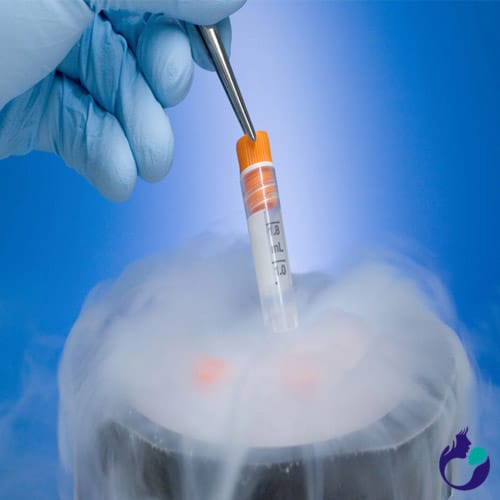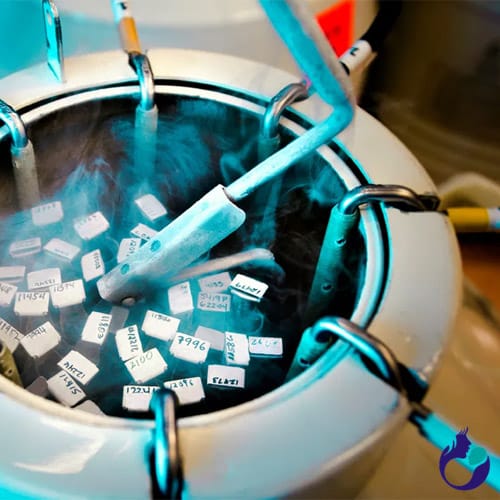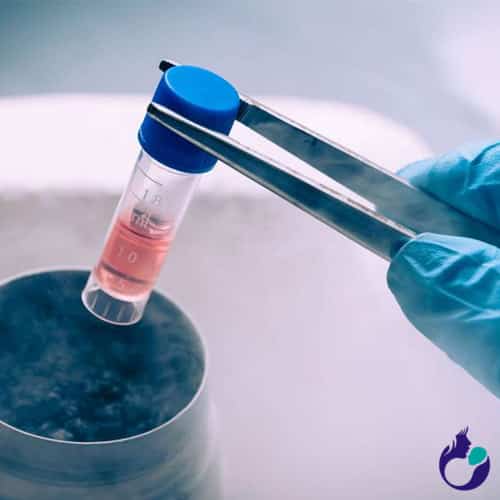Vitrification (Sperm ,Ovum And Embryo Freezing)
Overview of Vitrification in IVF Treatment Cycle
Vitrification is a technology that is used in the embryo and egg freezing process so that they can be stored for later use. It is a technology that has many uses outside of fertility care with egg and embryo freezing, as it allows something with a crystalline structure to be converted into something very smooth. Vitrification is the speedy cooling of the liquid medium in the absence of ice crystal formation. The solution forms a formless glass as a result of rapid cooling by direct immersion of the embryos in a polyethylene (PE) straw addicted to liquid nitrogen. Vitrification in IVF Treatment Cycle is the newest and more superior technique used for embryo cryopreservation. The slow freezing method as the name indicates takes a comparatively long time for the embryos to freeze and there is the probability of forming ice crystals within the cells. These eggs are then processed and fertilized in the laboratory. Normally, for more than 50% of couples, there will be outstanding quality embryos in addition to those that can be used for embryo transfer.
- This process cools the sperm and embryos very slowly to sub-zero temperatures.
- Cryopreservation is used to store semen and embryos for an indefinite period.
- It is typically effective if men face a possibility of sterilization due to vasectomy, prostate or testicular surgery, radiation or chemotherapy, etc.
- At times semen is also frozen before IVF as backup, in case of difficulty in semen collection on the day of oocyte retrieval.
- Vitrification is one of the latest advancements in fertility treatment.
- The process refers to the freezing of eggs (also embryos) to store them for an indefinite period. Unlike sperms, unfertilized ova cannot be stored using the slow freezing technique.
- Rather, Vitrification works by using higher concentrations of cry protectants that ensure much faster cooling rates, and without the formation of ice crystals.
- It is useful for women who face the possibility of sterilization in the future.


Sperm freezing and storage
Sperm freezing and storage is the procedure whereby sperm cells are frozen to preserve them for future use. Sperm cells have been frozen and thawed successfully for more than 40 years. By using special technology and then keeping sperm in liquid nitrogen & it can be stored for many years while maintaining a reasonable quality
Who may benefit from sperm freezing?
Men who work in high risk occupations, for example
- Where there is a family history of premature andropause, especially in the man’s father, uncles, or paternal grandfather
- Men who are away from home for extended periods and whose wives or partners may require fertility treatment during their absence
- Any man whose sperm counts are declining and there is concern that he could become azoospermic
Embryo Freezing in Anand
In a typical IVF or ICSI treatment cycle, the woman’s ovaries are stimulated to produce many eggs. Following fertilization and embryo culture, the best embryos are selected for embryo transfer. For about 50% of couples, there will also be good embryos that are surplus to those required for embryo transfer. These embryos can be frozen at this point for future use.
Embryo freezing (cryopreservation) is a method of preserving the viability of embryos by carefully cooling them to very low temperatures. This is carried out in the laboratory using specialized freezing equipment and the embryos can then be safely stored in liquid nitrogen for extended periods.

Why do we freeze embryos?
Embryo freezing gives you more opportunities for a pregnancy for each hormone stimulation cycle and egg collection. If you do not become pregnant in that first cycle, we can transfer another embryo during a frozen embryo transfer cycle.
How does embryo freezing work?
Embryos can be frozen from Day 2 (four-cell stage) to Day 5 (Blastocyst). They are placed in thin plastic straws, sealed at both ends, and labeled with your name and identification number.
They then go into a freezing machine, where the temperature rapidly drops to -150° Celsius. The straws are then placed in goblets and put into tanks filled with liquid nitrogen, which keeps the temperature at -196° Celsius.
Success rates with frozen embryos
At USHA IVF, many of our births, over many years, have come from the transfer of frozen and thawed embryos. On average, the success rate is about 40%, but this mainly depends on the age of the woman’s eggs when the embryos are frozen.
So, if you were to freeze your embryos in your first IVF cycle at the age of 38, and then use them when you’re 42, your fertility chance will be relative to that of a 38-year-old woman rather than a 42-year-old.
What are the benefits of embryo freezing?
The main benefit of embryo freezing is the option to have frozen embryos thawed and transferred to the woman’s uterus in the future without having to undergo stimulation of the ovaries or egg retrieval. It is also possible that there may be enough frozen embryos for more than one subsequent cycle.
